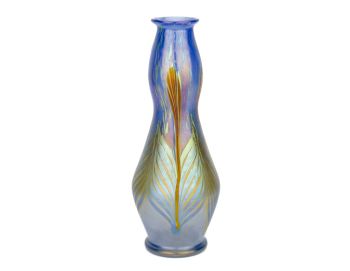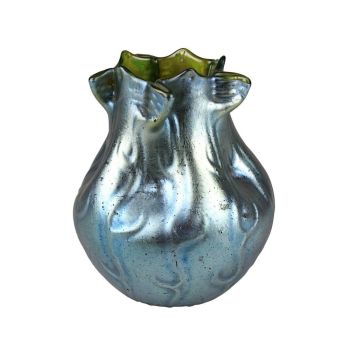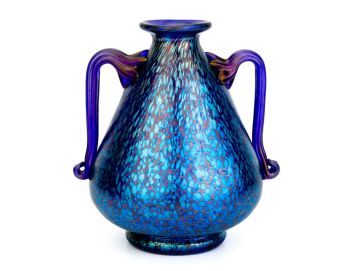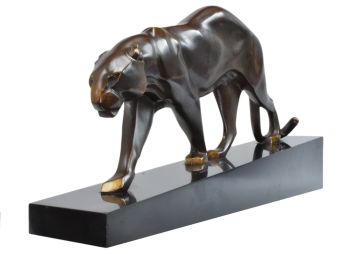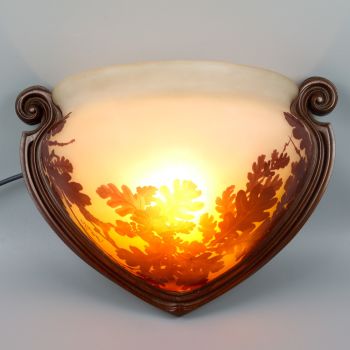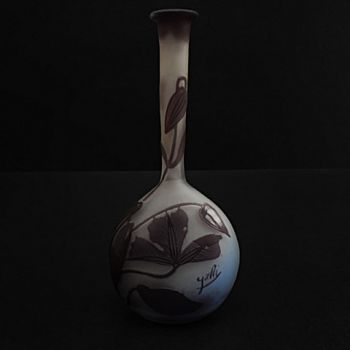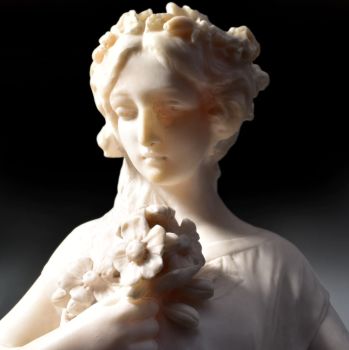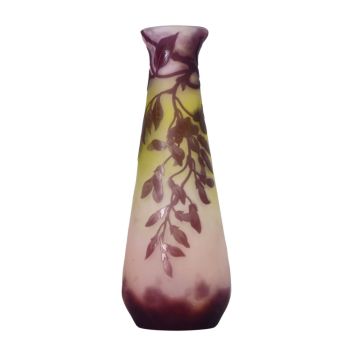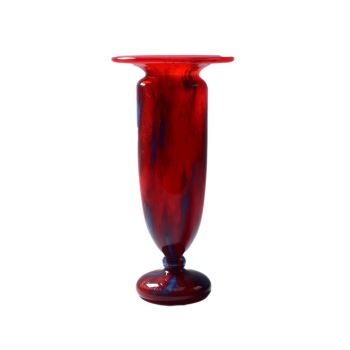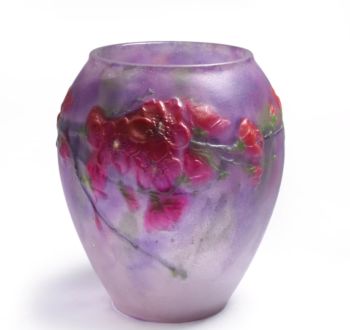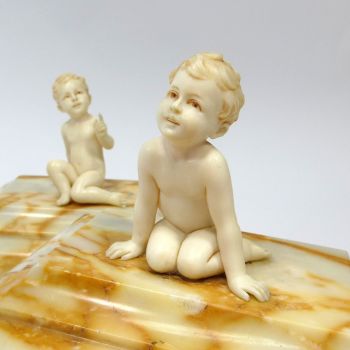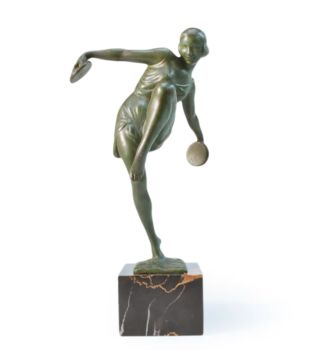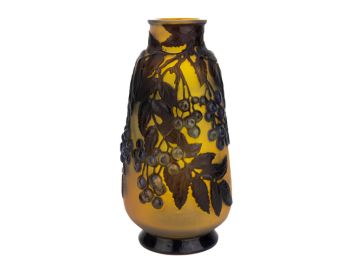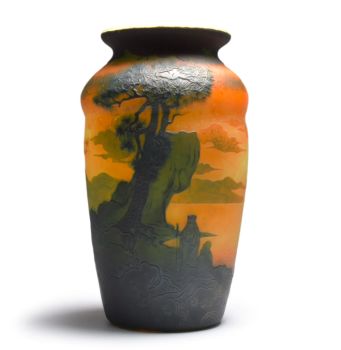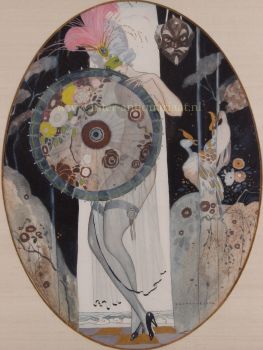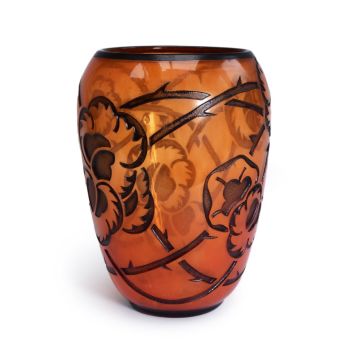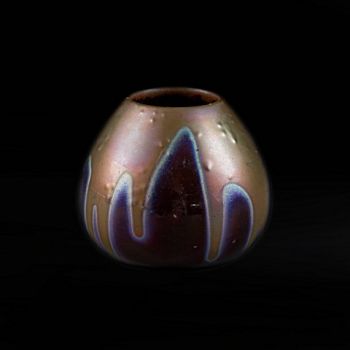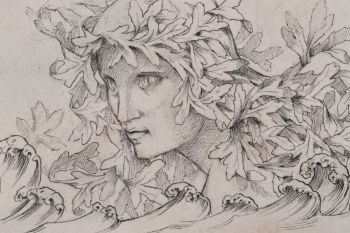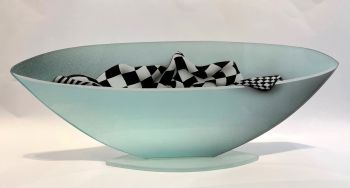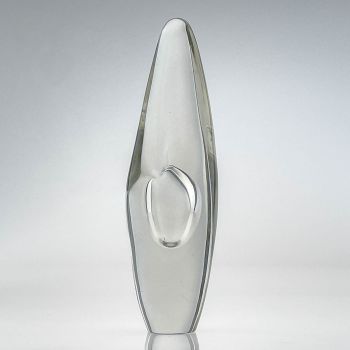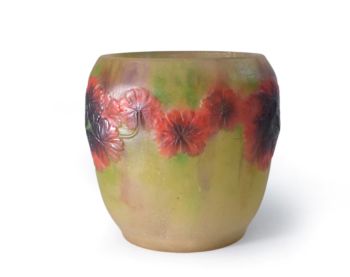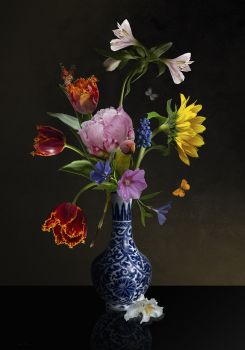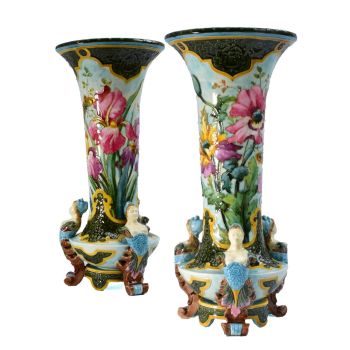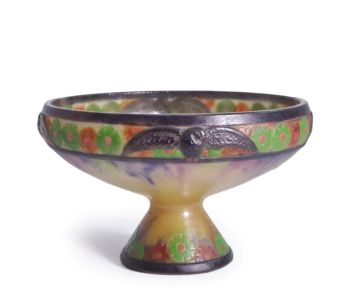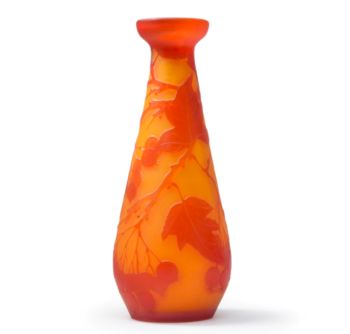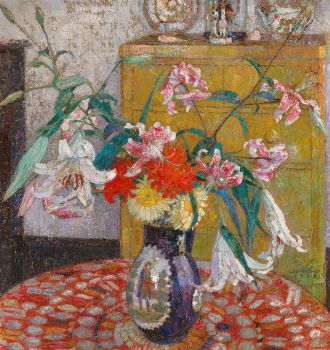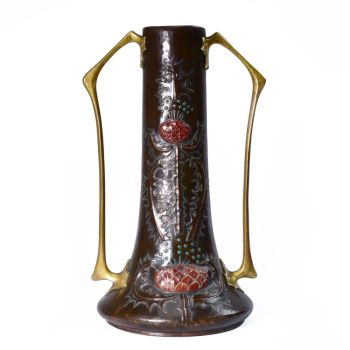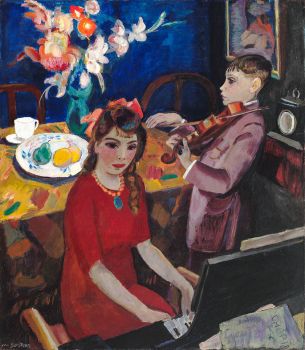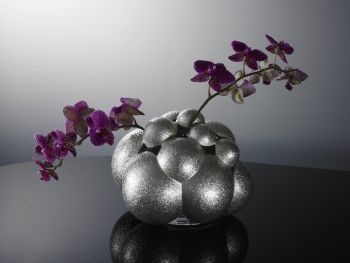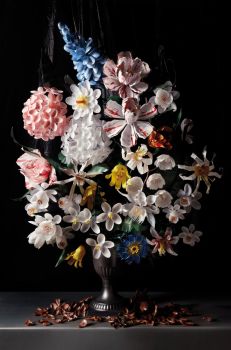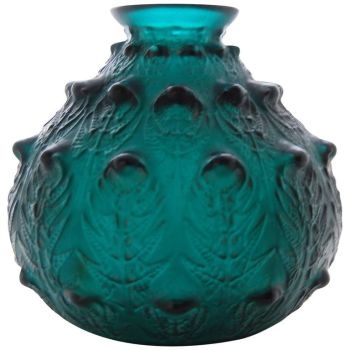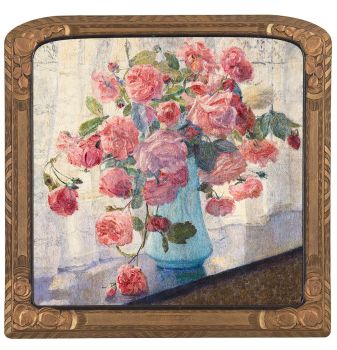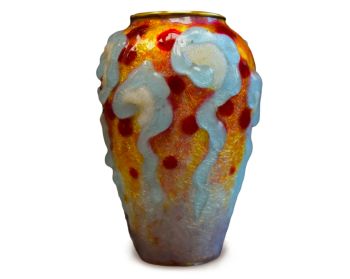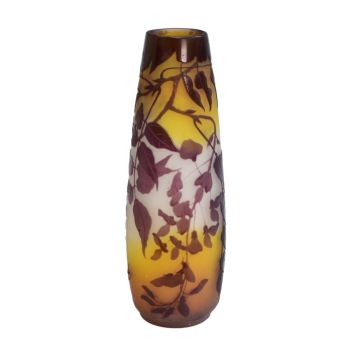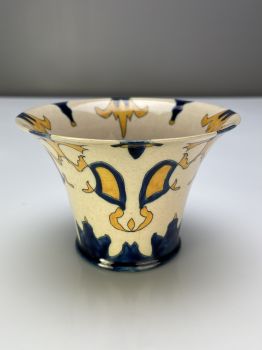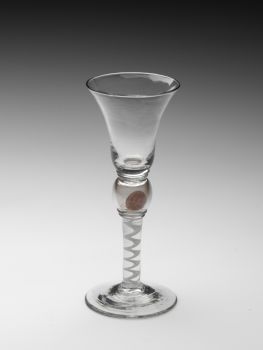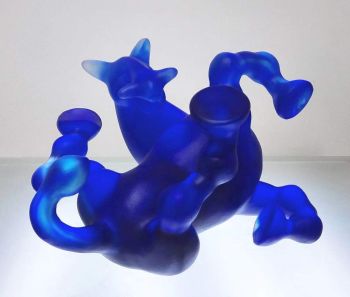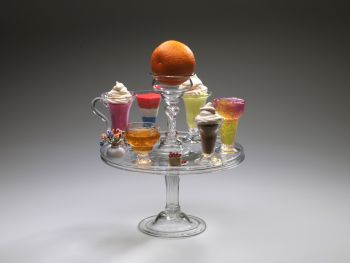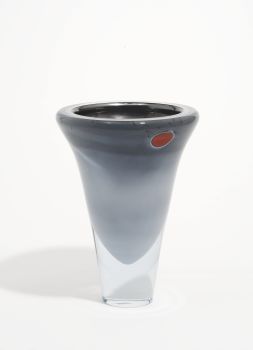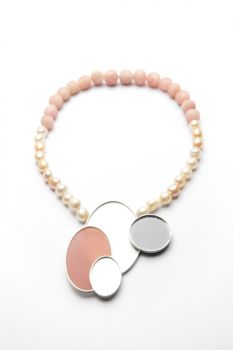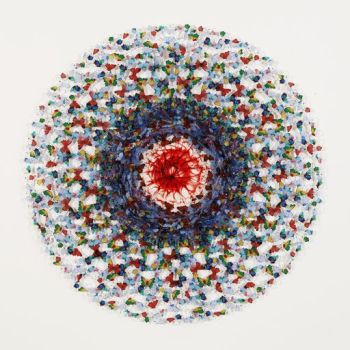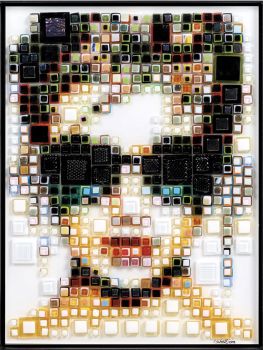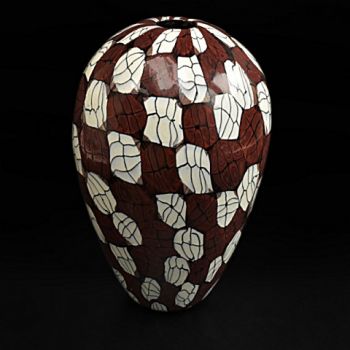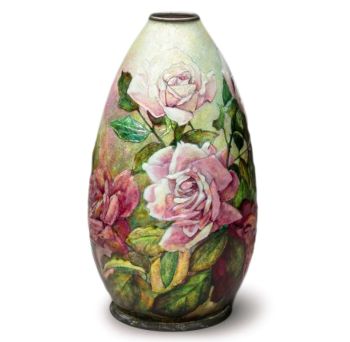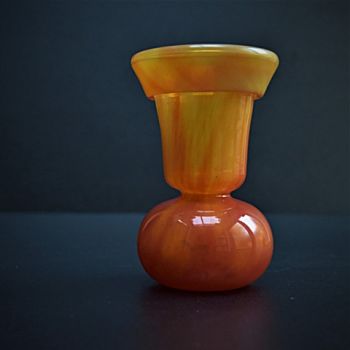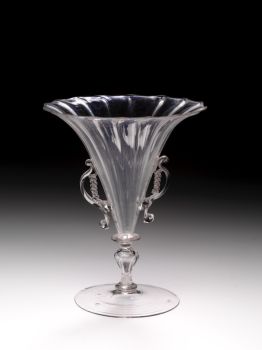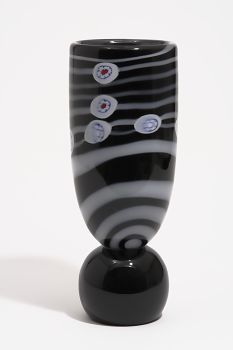Johann Loetz Witwe – “Zebra” decor, designed by Koloman Moser for E. Bakalowits – 1903 1903
Johann Loetz (Lötz) Witwe Klostermühle
Vidrio
8 cm, ø 7 cm
ConditionMint
Precio a consultar
Antiques Emporium
- Sobre la obra de arteIntroducing a rare and captivating piece by Johann Loetz Witwe, featuring the exceptionally rare Zebra decor, designed by the renowned Koloman Moser in 1903 for E. Bakalowits, Vienna. This exquisite vase/cup is a true testament to the artistic brilliance and innovative craftsmanship of the early 20th century.
The Zebra decor is a distinctive and highly sought-after pattern, characterized by its striking black and white or contrasting dark and light bands that mimic the natural beauty of zebra stripes. The intricate glasswork and iridescent finish highlight the exceptional skill and artistry of Loetz glassmakers.
Koloman Moser, a pivotal figure in the Vienna Secession movement, designed the Zebra decor in 1903. Moser was instrumental in shaping modern design, blending artistic creativity with functional elegance. His work in 1903 was marked by groundbreaking designs that pushed the boundaries of traditional decorative arts.
This vase/cup is not just a decorative item but a piece of history. In 1903, Moser’s designs were revolutionizing interiors, moving towards modern, geometric styles that emphasized simplicity and elegance. His collaboration with Loetz and E. Bakalowits resulted in pieces that were both artistic and commercially successful, appealing to the discerning tastes of the time.
Koloman Moser (1868-1918) was one of the foremost designers of the Vienna Secession, a movement that sought to break away from the historical emphasis on traditional styles. In 1903, Moser was at the height of his career, creating innovative designs that were both functional and aesthetically pleasing. His work during this period included not only glassware but also furniture, textiles, and entire interior designs, showcasing his versatile talent and visionary approach.
This vase/cup, with its Zebra decor, is an excellent addition to any modern interior. Its bold pattern and elegant form make it a striking centerpiece, whether displayed on its own or as part of a collection. The piece reflects the transition towards modern design principles that Moser championed, making it both a timeless and contemporary artifact.
Dimensions:
Height: 88mm / 3.46”
Diameter top: 75mm / 2.95”
Diameter base: 65mm / 2.56″
Condition: Mint
Literature:
Hatje Cantz – Loetz Bohemian Glass 1880 – 1940 – Page 159, 160 & 316.
Prestel – Böhmisch Glas 1880 – 1940 Band 1 Werkmonographie – Page 172, 173, 178 & 340 . - Sobre el artista
La cristalería Loetz existió en Klostermuhle, Austria, durante poco más de cien años, a partir de 1840. Pero su apogeo fue durante la vida de Max Ritter Von Spaun, nieto del Johann Loetz original que había fundado la empresa.
Von Spaun se hizo cargo de la empresa en 1879 y la dirigió hasta 1908, un año antes de su muerte. Fue asistido por Eduard Prochaska, su especialista técnico, y juntos inventaron, diseñaron y produjeron toda una serie de maravillosos nuevos tipos de vidrio, obteniendo varias patentes y ganando premios en todas las principales exposiciones mundiales durante la década de 1890 y los primeros años de el nuevo siglo.
La empresa Loetz se encontraba entre los líderes en diseño Art Nouveau y especialmente en vidrio artístico iridiscente. El vidrio "Papillon", como el jarrón de la izquierda, a veces se conoce hoy como vidrio "mancha de aceite". Otro colorante favorito de Loetz fue el vidrio irridizado con senderos tirados llamado vidrio "Fenómeno".
Había jarrones irridizados con cintas de colores metálicos que serpenteaban sobre la superficie, y muchos diseños espectaculares con estelas aplicadas de hermosos colores, o simplemente sacadas del cuerpo del vidrio para formar asas o decoración.
Alrededor de 1900, la compañía comenzó a colaborar con diseñadores externos, y algunos grandes artistas diseñaron piezas para Lotz, en particular Joseph Hofmann, Koloman Moser, Maria Kirchner y Hofstatter.
En 1908 Loetz fue adquirido por el hijo de Max Von Spaun, también llamado Max, y aunque luchó financieramente (pasando por la quiebra en 1911 y nuevamente en 1931) hubo varios grandes diseñadores cuyo trabajo fue producido por Loetz durante esos años y a través del arte. período de deco. Estos incluyeron a Adolf Beckert y Michael Powolny.
¿Está interesado en comprar esta obra de arte?
Artwork details
Related artworks
Johann Loetz (Lötz) Witwe Klostermühle
Johann Loetz Witwe – Jugendstil Cobalt Papillon vaas1900 - 1910
Precio a consultarAntiques Emporium
Johann Loetz (Lötz) Witwe Klostermühle
Johann Loetz Witwe - Phänomen Genre 7773 – Orange1900 - 1910
Precio a consultarAntiques Emporium
Johann Loetz (Lötz) Witwe Klostermühle
Johann Loetz Witwe – Ausfuehrung 146 Titania vase – 19121910 - 1919
Precio a consultarAntiques Emporium
1 - 4 / 7René Lalique
Un jarrón temprano 'Bluets' diseñado por Rene Lalique (1860-1945)1910 - 1920
Precio a consultarLennart Booij Fine Art and Rare Items
1 - 4 / 24Artista Desconocido
François-Théodore Legras – Tall “Fleurs de Pommier” apple blossoms vase1900 - 1909
Precio a consultarAntiques Emporium
Johann Loetz (Lötz) Witwe Klostermühle
Johann Loetz Witwe – Ausfuehrung 146 Titania vase – 19121910 - 1919
Precio a consultarAntiques Emporium
Johann Loetz (Lötz) Witwe Klostermühle
Johann Loetz Witwe - Phänomen Genre 7773 – Orange1900 - 1910
Precio a consultarAntiques Emporium
1 - 4 / 24Paulus Franciscus Kromjong
Flores frente a Arearea Aka (alegría) por Gauguin '20th century
Precio a consultarZebregs & Röell - Fine Art - Antiques
René Lalique
Un florero "Fougeres" de color verde oscuro muy raro diseñado por R. Lalique1912
€ 8.950Lennart Booij Fine Art and Rare Items
 curada por
curada porSilla Scheepens
Johann Loetz (Lötz) Witwe Klostermühle
Johann Loetz Witwe – Jugendstil Cobalt Papillon vaas1900 - 1910
Precio a consultarAntiques Emporium
1 - 4 / 24Artista Desconocido
Un cáliz de monedas inglés-holandés1738
Precio a consultarPeter Korf de Gidts - Antiquairs
Gyrinus
Vidrio grabado punteado con putti1764 - 1766
Precio a consultarPeter Korf de Gidts - Antiquairs
Frères Daum
Daum Nancy – “Paysage Soleil Couchant” vase with two applied handles1900 - 1910
Precio a consultarAntiques Emporium
Artista Desconocido
Vidrio alado veneciano1550 - 1599
Precio a consultarPeter Korf de Gidts - Antiquairs
1 - 4 / 24Artista Desconocido
François-Théodore Legras – Tall “Fleurs de Pommier” apple blossoms vase1900 - 1909
Precio a consultarAntiques Emporium
Gabriel Argy-Rousseau
Gabriël Argy-Rousseau – Crabes et Algues vase – 19201920 - 1929
Precio a consultarAntiques Emporium
Demetre Chiparus
Demetre H. Chiparus – Bronze Art Deco statue “Rapture” – Édition Etling, Paris1920 - 1929
Precio a consultarAntiques Emporium
Firm Erhard & Sohne, Schwäbisch Gmünd
Erhard und Söhne – Jugendstil intarsia klok – 1908 / 19091900 - 1909
Precio a consultarAntiques Emporium
Johann Loetz (Lötz) Witwe Klostermühle
Johann Loetz Witwe – Jugendstil Cobalt Papillon vaas1900 - 1910
Precio a consultarAntiques Emporium
Johann Loetz (Lötz) Witwe Klostermühle
Johann Loetz Witwe - Phänomen Genre 7773 – Orange1900 - 1910
Precio a consultarAntiques Emporium
Johann Loetz (Lötz) Witwe Klostermühle
Johann Loetz Witwe – Ausfuehrung 146 Titania vase – 19121910 - 1919
Precio a consultarAntiques Emporium
Amalric Walter
Amalric Walter & Henri Bergé – Crabe plumier1920 - 1929
Precio a consultarAntiques Emporium
1 - 4 / 12










